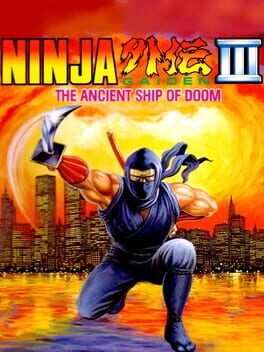

Ninja Gaiden III: The Ancient Ship of Doom
released on Aug 15, 1991
A port of Ninja Ryuukenden III: Yomi no Hakobune
Thrilling new cinema screen! Follow the story of Ryu's epic adventure through Tecmo's movie-like Cinema Screen Animation. As you complete each level, a new part of the story unfolds. Exciting new powers and weapons! Over the years Ninja Ryu's fighting skills have improved to include fantastic new powers and weapons. Action-packed Ninja adventure! Can you get Ryu through his most challenging adventure as he battles the hideous ancient forces of darkness to save mankind? The Ultimate Ninja Challenge!
Reviews View More
vou parecer um idiota, pois eu reclamei da dificuldade absurda do Ninja Gaiden I, mas cara. Ninja Gaiden III comparado aos seus antecessores é absurdamente facil, os inimigos não dão tanto dano, o personagem já não toma um knockback grande, e o personagem é mais controlavel e flexivel, com novas mecanicas, os graficos são absurdamente melhores, e as cutscenes(bom as cutscenes tão a mesma coisa) e a historia continua a mesma merda desinteressante e mal feita de sempre.
meu único aviso é, se tu for um epilético, não jogue esse jogo, putakipariu, Zelda II tbm, não jogue, ou tu morre
(o jogo é melhor em enredo comparado aos anteriores, os desings das fases são melhores, e a mecanica flui muito melhor. Só não posso falar da música pq eu tava escutando playlist enquanto jogava então n posso falar, vou rejogar só pela soundtrack)
MAS ENFIM, FINALMENTE TERMINEI ESSA TRILOGIA DE JOGO CAGADO
meu único aviso é, se tu for um epilético, não jogue esse jogo, putakipariu, Zelda II tbm, não jogue, ou tu morre
(o jogo é melhor em enredo comparado aos anteriores, os desings das fases são melhores, e a mecanica flui muito melhor. Só não posso falar da música pq eu tava escutando playlist enquanto jogava então n posso falar, vou rejogar só pela soundtrack)
MAS ENFIM, FINALMENTE TERMINEI ESSA TRILOGIA DE JOGO CAGADO
